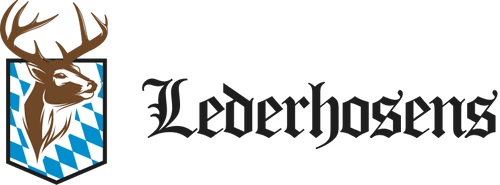How Lederhosen Evolved from Workwear to Worldwide Fashion
Lederhosen: From Alpine Workwear to Global Icon
When you spot someone in Lederhosen — those iconic leather shorts with suspenders — at Oktoberfest, you instantly think tradition. But few realize that these rugged garments weren’t made for parties and parades. Lederhosen were built for the tough lives of Alpine farmers, hunters, and craftsmen. Before they became symbols of Bavarian celebration, they were the uniform of the hardworking.
In this blog, we’ll explore how these leather shorts made their way from muddy fields to music-filled tents around the world. From forgotten customs to fashion revivals — here’s how Lederhosen earned a permanent place in global culture.
Lederhosen, those sturdy little trousers, weren’t originally designed for dancing or beer-drinking. They were made for the hard life in the Alpine countryside. Built to last, they served a purpose long before they became fashionable.
In this blog, we’ll take a detailed journey through time, exploring how these rugged farm pants transformed into a worldwide symbol of celebration. From forgotten traditions to cultural pride — here’s how a simple garment stitched its place in global fashion.
🪓 The Humble Origins: Built for Hard Work
Long before Lederhosen hit the beer tents, they were essential for daily survival. In the mountainous regions of Bavaria and Austria, farmers, hunters, and shepherds needed durable clothing. These people faced steep trails, wild weather, and backbreaking labor.
That’s where Lederhosen came in.
- Material: Made from thick animal hides like deerskin or goatskin
- Functionality: Resistant to dirt, rain, and tearing
- Design: Short or knee-length for easy movement
- Build: Stitched tough without comfort-focused linings
Because leather naturally repels moisture, it kept wearers dry while working in mud or snow. The short length? Perfect for climbing slopes and tending livestock.
Back then, fashion wasn’t the point. Function was everything.
🌄 A Rural Transformation: Symbols of Identity
As the 18th century progressed, something subtle changed. Bavarian locals began to add decorative touches to their trousers. Embroidery appeared on flaps and cuffs — not just for beauty, but to tell a story.
Each symbol had meaning:
- Edelweiss flower = bravery and purity
- Oak leaves = strength and masculinity
- Stags = nobility and wilderness pride
Through these touches, Lederhosen became more than workwear. They became a visual representation of Alpine heritage — stitched in pride.
👑 Royal Recognition: Lederhosen Goes Noble
The biggest leap in Lederhosen’s story came in the 19th century, when Bavarian King Ludwig II took notice. During royal hunts, he and his elite circle wore elaborately styled Lederhosen — instantly elevating their status.
Suddenly, these leather trousers were seen through a new lens.
- Customization: Wealthy men ordered lined versions with gold thread
- Accessories: Buttons made from stag horn or silver
- Flap design: “Hosenlatz” became ornate and embroidered
This shift turned rustic trousers into a symbol of refined masculinity. And so, Lederhosen stepped into high society.
🇩🇪 Nationalism and Cultural Revival
By the late 1800s, as Germany was unifying, Bavaria wanted to hold on to its distinct culture. That’s when cultural clubs called “Trachtenvereine” emerged. Their goal? Preserve traditional dress, music, and dance.
In these circles:
- Lederhosen became part of formal identity
- Boys wore their father’s Lederhosen with pride
- Festivals featured locals in full traditional attire
- Design elements became standardized and region-specific
From fabric to embroidery, every detail now reflected cultural pride. Lederhosen had become a wearable heritage.
🕊️ Post-War Changes: Decline and Rebirth
After World War II, Germany experienced dramatic cultural shifts. Younger generations turned away from old customs, including traditional dress. Lederhosen, once everywhere, began to disappear from public life.
But not forever.
By the 1970s and 80s, interest in folk traditions reignited. Oktoberfest started gaining global attention. With tourists flocking to Bavaria, shops began offering fun, casual Lederhosen for partygoers.
This time, it wasn’t just locals. Everyone wanted in.
🌍 Global Journey: From Munich to the World
Fast forward to today — and Lederhosen has truly gone global. No longer limited to Germany, these iconic shorts now pop up across continents.
Here’s where they’ve spread:
- USA: Cities like Milwaukee, Denver, and Cincinnati host Oktoberfest events where Lederhosen is a must
- Japan: Tokyo beer halls stock them online
- Australia: Wedding parties and Oktoberfest groups wear coordinated sets
- Online: Faux leather versions available for costumes and parties
Modern takes include everything from vegan leather alternatives to female-led fashion lines. This once-humble outfit now makes a stylish global statement.
❤️ Why the World Fell in Love
So, why do people everywhere — even those with no German roots — love Lederhosen?
Because it’s more than clothing. It’s a conversation starter.
- It tells a story — about tradition, resilience, and joy
- It stands out — unique in design and energy
- It connects people — across cultures and continents
- It feels meaningful — not just mass-produced fashion, but timeless artistry
Wearing Lederhosen brings a sense of belonging, even if you’ve never set foot in Bavaria.
🧵 A Modern Revival: Fresh Takes with Tradition
Today’s designers are getting creative while respecting the roots.
Expect to see:
- Slim-cut styles for city wear
- Bright patterns and bold color stitching
- Kids’ and women’s versions with flair
- Eco-conscious materials and sustainable tanning
- Custom embroidery reflecting personal stories
Even on the fashion runway, Lederhosen are getting a moment. And why not? They carry centuries of soul in every stitch.
🥨 Final Thoughts: A Legacy You Can Wear
Lederhosen isn’t just Oktoberfest funwear. It’s a cultural artifact — stitched from the leather of labor, love, and legacy.
From dirt-covered work pants to global icons of tradition and celebration, their journey is both inspiring and unforgettable.
So next time you wear a pair, remember this:
You’re not just dressing up. You’re honoring generations of craftsmanship, resilience, and pride.
And that, dear reader, is worth raising a toast to. 🍻
